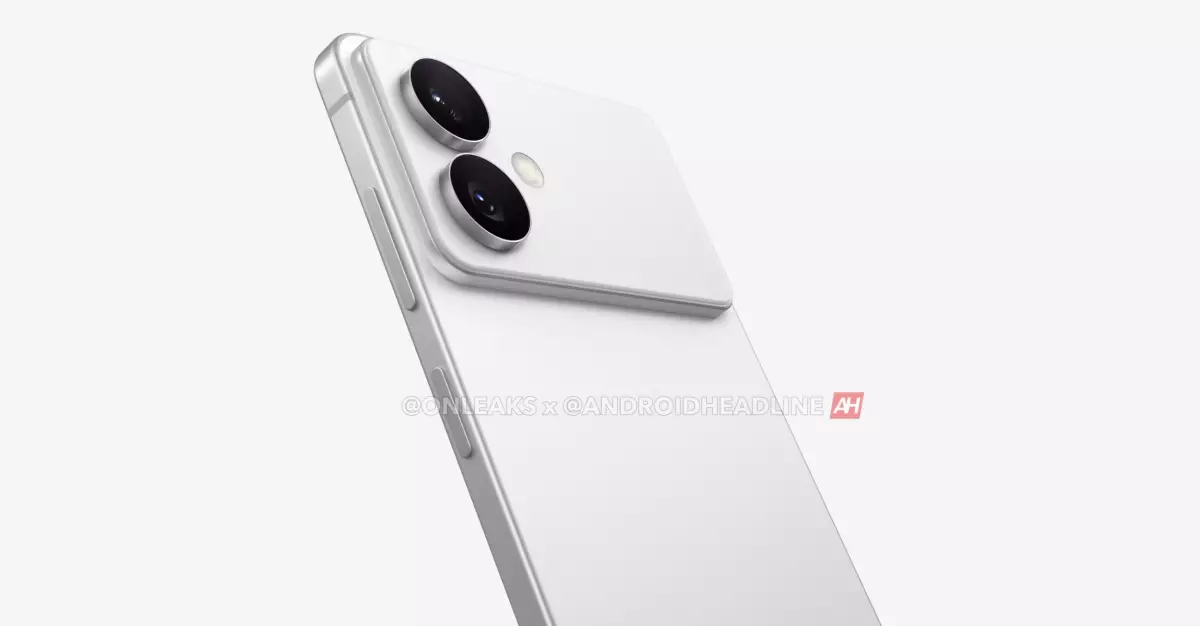The recent leaks surrounding the upcoming Samsung Galaxy S26 Edge signal a significant shift in smartphone design philosophy. Historically, Samsung’s flagship devices have showcased a distinctive camera module that complements their sleek, modern look. However, the leaked renderings suggest a move toward minimalism and a design language reminiscent of Apple’s latest devices, particularly the iPhone 17 Pro. This convergence of design trends raises critical questions about innovation, user preference, and the future trajectory of flagship smartphones.
Design Parallels and Market Trends
One of the most striking aspects of the leaked images is the resemblance of the Galaxy S26 Edge to Apple’s iPhone 17 Pro. Instead of Samsung’s traditional multi-camera vertical array, the new render depicts a slim, horizontally-aligned camera bar that appears almost copy-pasted from Apple’s recent aesthetic. This similarity indicates a potential industry pivot away from bulky, camera-dominant back panels to more streamlined and uniform designs. While some might argue this hampers the uniqueness of Samsung’s identity, it also reflects an acknowledgment of what consumers find appealing—sleek, less cluttered visuals that enhance perceived elegance.
Furthermore, the emphasis on ultra-slim bezels and thin profiles embodies an ongoing trend toward maximum screen real estate and minimal physical footprint. Samsung’s rumored 5.5mm thickness (excluding the bump) exemplifies this commitment, pushing the boundaries of what is technically feasible while aiming for a more comfortable grip. Yet, this raises the question: are these design choices purely for aesthetic appeal, or do they compromise durability and usability?
Functionality and Innovation Challenges
What’s particularly intriguing is the possible incorporation of built-in magnets for Qi2 wireless charging—a feature aligned with Apple and Google’s latest models. While this indicates a progressive step toward standardized, convenient wireless energy transfer, it also highlights a potential stagnation in camera innovation. Samsung’s previous distinguishing feature was its versatile camera system; shifting toward a more minimalistic, two-lens setup might be seen as a deprioritization of photographic capabilities in favor of form. Is this a sign of technological compromise or an evolution driven by user behavior favoring portability and simplicity?
In addition, the rumored thinner design, while visually pleasing, raises concerns about device durability and protection. As smartphones become more fragile, prioritizing aesthetics over robustness could alienate users who demand both beauty and resilience. Moreover, it reflects a broader industry trend: sacrificing thickness and lugging design elements in favor of sleek looks, sometimes at the expense of practical utility.
Implications for Consumers and Industry Dynamics
The imitation of Apple’s polished look by Samsung hints at a deeper industry phenomenon—design homogenization. As flagship devices converge toward similar aesthetics, differentiation becomes increasingly challenging. Consumers might find it harder to distinguish between brands at first glance, which could diminish brand loyalty rooted in unique design language.
This trend also raises critical questions for innovation. Are companies now competing in a race to perfect similar designs, or is this a sign that true technological breakthroughs are elusive, leading brands to compete through subtle appearance tweaks? Samsung’s adoption of a camera bar reminiscent of Apple might be a strategic move to appeal to a broader audience who values elegance over a distinctive brand look.
Ultimately, the industry’s focus seems to be shifting toward integrating features like Qi2 wireless charging and ultra-slim profiles, perhaps at the expense of pushing the boundaries of core technology. Whether this leads to a stagnation or a renaissance of innovation remains to be seen—and consumers should remain critical of how much emphasis is placed on appearance versus functional novelty.

